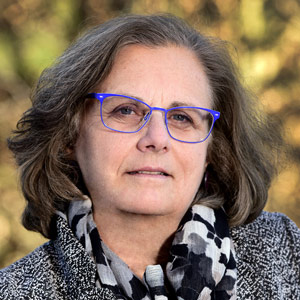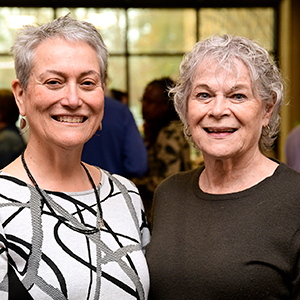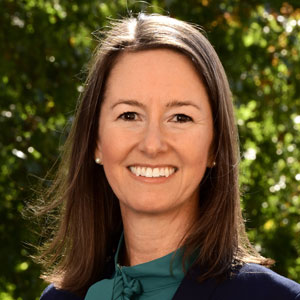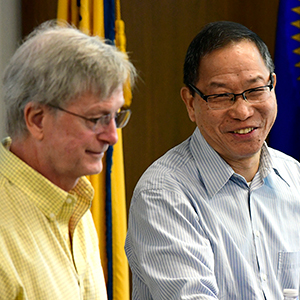When Darryl Zeldin, M.D., joined NIEHS in 1994, he was laser-focused on advancing his research into asthma, allergies, and eicosanoids, which are molecules that play key roles in inflammation and other immune responses. Today, he reflects fondly on the 380 peer-reviewed scientific papers he has published, but he says his real legacy will live on in the work of his colleagues in the institute’s Division of Intramural Research (DIR).

Zeldin started out at NIEHS as a tenure-track investigator, eventually rising to senior investigator. However, he soon became involved in the life of the wider institute, serving in various leadership positions. For example, Zeldin was president of the NIEHS Assembly of Scientists, and from 2007 to 2011, he was the institute’s Clinical Director. In October 2011, he was selected as the NIEHS Scientific Director, a position that he still holds today.
Since becoming Scientific Director, Zeldin has recruited world-class scientists, expanded collaboration with other National Institutes of Health (NIH) institutes, successfully navigated the COVID-19 pandemic, and increased administrative efficiency across DIR, among other accomplishments. In addition, his strategic scientific vision has led to exciting research and new initiatives that advance understanding of how the environment affects human health.
Recently, Environmental Factor sat down with Zeldin to learn more about his early years at the institute, what motivated him to pursue a career as a physician-scientist, and why he decided to join the NIEHS senior leadership team rather than focus solely on his own research. Also, he discussed the value of mentorship and scientific collaboration, and he shared a few scientific areas that he believes will be especially important in the coming years.
Mentors make difference
Environmental Factor: Can you talk about your early years at NIEHS? Looking back, are there particular mentors that were highly influential or accomplishments you are especially proud of?
Darryl Zeldin: When I came to NIEHS, I was first struck by how it was such a friendly, collaborative environment. There was not a lot of competition between the PIs [principal investigators], and everybody was out to help each other.
Former NIEHS Director Kenneth Olden hired me because he wanted a physician-scientist who could enhance the clinical relevance of the intramural program. He was a wonderful role model, and we would meet regularly and just talk. I still cherish those conversations.
Another major influence was my lab chief, Paul Nettesheim, who passed away in 2016. He took me under his wing and was my primary mentor during my tenure-track years. Carl Barrett, who was the Scientific Director at the time, was also a big influence on me.
Some of the folks I collaborated with early on at NIEHS include Tish Murphy, who is now a senior investigator at the National Heart, Lung, and Blood Institute; Joyce Goldstein, a groundbreaking researcher who passed away in 2019; and Kenneth Korach, currently a Scientist Emeritus in DIR. There were many other top-notch investigators I worked with, and they all helped me learn the ropes of NIH.
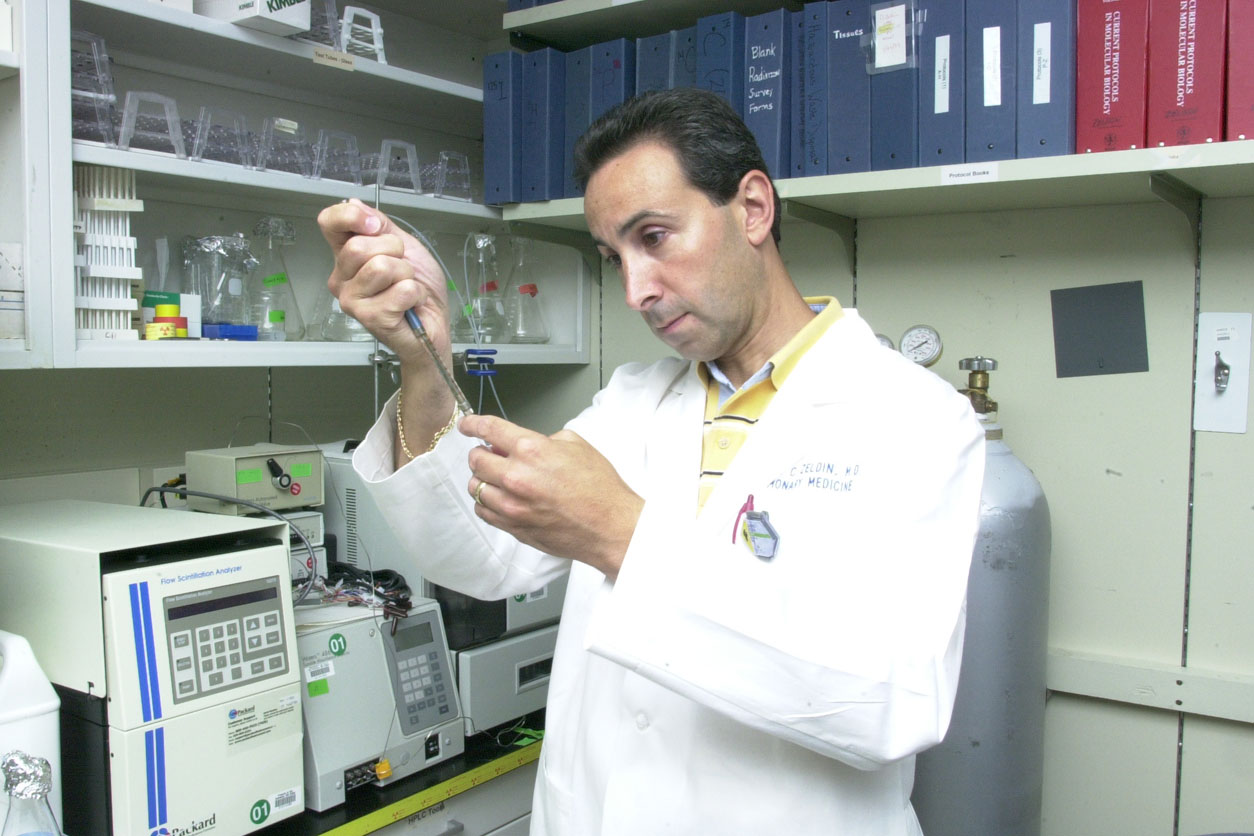
A major accomplishment for me was earning tenure, but I had a bunch of great trainees during those early years and beyond, and the credit really goes to them for helping me build a strong research program. People like John Seubert, who is now a professor at the University of Alberta; Craig Lee, now at the University of North Carolina at Chapel Hill; and Shu Wu, now at the University of Miami, were critical to my early success.
Probably the most memorable experience during those years was a large study we conducted called the National Survey of Lead and Allergens in Housing. We analyzed 831 homes across the U.S. and collected dust samples, measuring allergens in the dust. Then we looked at how those levels related to whether people in the homes got allergy and asthma. The study garnered significant attention among the lay press, and I was even interviewed on Good Morning America, in addition to many other outlets. It was an exciting moment.
Physician-scientist
EF: After earning your M.D. from Indiana University School of Medicine, you completed a residency in internal medicine at Duke University and a fellowship in pulmonary and critical care medicine at Vanderbilt University. What inspired you to be a physician-scientist?
DZ: I always wanted to be a doctor. My parents bought me a doctor's kit when I was about five, and I played doctor with fake stethoscopes. Also, our family had a close relationship with my pediatrician, and I shadowed him when I was a teenager. And in high school, I volunteered at a hospital.
When I was in college at Boston University, I participated in a summer program that introduced me to research, and I absolutely loved it. I ultimately realized that I was passionate about clinical medicine and interacting with patients but also research that advances fundamental scientific knowledge. So, I decided to do both, and I tried to create a career that allowed for that.
Compared with Ph.D. researchers, physicians are undertrained in terms of their knowledge of some of the basic sciences. For example, we don't go as deep as some Ph.D. scientists in our training on statistics, molecular pathways, and so forth. But I think we have an advantage because of our very broad overview of human physiology and biology. Everything always comes back to how our research can benefit patients, and how we can develop new ways to prevent and treat disease. Those kinds of questions are constantly in the back of our minds.

Reflecting on achievements
EF: What are some of your major accomplishments from your 11-plus years at the helm of DIR?
DZ: I should say up front that it is easy for me to take credit for our successes, but ultimately, it is the PIs, staff scientists, biologists, chemists, and trainees who are doing all the work, and they really deserve all of the praise for our division’s achievements.
One of our biggest accomplishments is that we have recruited many outstanding tenure-track investigators, mid-career scientists, and senior researchers. One of my primary goals in hiring is to bring on people who are better than me, and that is certainly the case with the individuals who have joined our institute in recent years. I have enjoyed mentoring new scientists and providing them with the resources they need to be successful.
Another accomplishment has to do with diversity, equity, inclusion, and accessibility [DEIA]. I am a big proponent of diversity because it enhances scientific quality and leads to discoveries that otherwise would not have been imagined. Since I became Scientific Director, we have hired a large number of individuals with a strong commitment to diversity, and we have recruited scientists and staff from a variety of backgrounds. These actions have fostered a great work environment across DIR, and new ideas and perspectives are not just respected but encouraged.
Beyond our success in recruitment and DEIA, we have built strong research partnerships with scientists in NIEHS and across NIH. For example, I have worked with Scientific Directors at other NIH institutes to set up collaborative programs where PIs co-mentor trainees who work on projects that are awarded on a competitive basis. In addition, we have a number of core facilities that provide scientific infrastructure and support for scientists at NIEHS and at other institutes, such as in the area of cryo-electron microscopy. Another example is the recently developed metabolomics consortium.
Also, I have been fortunate to work with outstanding administrative officers who have helped to reduce red tape and administrative headaches that often accompany federal programs. We have become more paperless and have developed online systems that aid in management and project tracking. And we demonstrated great flexibility during the COVID-19 pandemic, providing support for scientists and staff to continue their work in a hybrid environment. We forged our way through those difficult years, and research productivity is expanding, which is great to see.
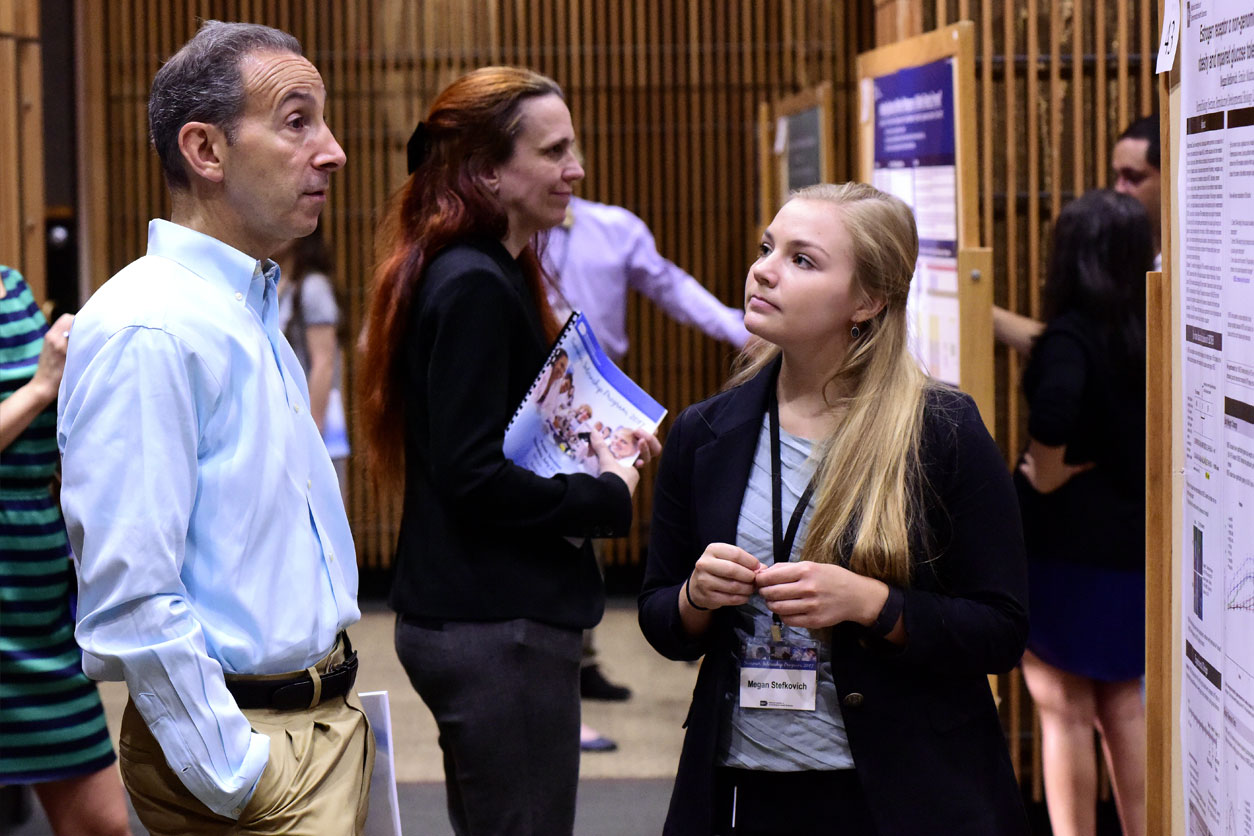
Research priorities going forward
EF: What research areas or initiatives do you see as especially important in the coming years?
DZ: We are working hard to develop a strong intramural effort that complements the overall NIH Climate Change and Health Initiative. We collaborated with the NIH Office of Intramural Research to create the Intramural Targeted Climate Change and Health funding program [see related article in this issue]. We have outlined a three-pronged approach. The first is to increase the number of intramural investigators who are doing climate change and health research. The second is to create a virtual center that stimulates coordination and collaboration, and the third is to provide the infrastructure and instrumentation that the scientists need to conduct this research.
Another priority area is precision environmental health. We want to expand research into how environmental exposures interact with an individual’s unique genetic and biological makeup. To that end, we are investing in instrumentation where we can measure what things are in the environment that people are exposed to and do it in a highly comprehensive way. That is key because people are not exposed to just one thing, they are exposed to many chemicals at the same time.
So, we are working to enhance our analytical capabilities, and we have bought multiple mass spectrometry instruments over the last several years. We also are investing in data science and computational biology tools because as we generate more and more scientific data, the hard part will be to analyze that information to a point where scientists can understand it.
Emerging technologies and new approaches will be critical. A major priority is to develop multi-omics technologies, particularly at the single-cell level. The goal is to better understand the impact of the environment in terms of regulation of gene expression at the genetic, epigenetic, and proteomic level, and how that, in turn, influences human health and disease development.
We have multiple investigators from many scientific backgrounds working on these and other important initiatives, and I am excited to see what cutting-edge research they will produce. As I have reflected on my career and what I have accomplished, I have realized that my legacy will live on in the scientists I have recruited and mentored, and who have gone on to do amazing things in their careers, whether at NIEHS or elsewhere. That is incredibly rewarding to me, and it makes going to work each day a true joy.
Citation: Arbes SJ Jr, Cohn RD, Yin M, Muilenberg ML, Burge HA, Friedman W, Zeldin DC. 2003. House dust mite allergen in US beds: results from the first National Survey of Lead and Allergens in Housing. J Allergy Clin Immunol 111(2):408–414.
(Jesse Saffron, J.D., is Deputy Director of the NIEHS Office of Communications and Public Liaison.)





